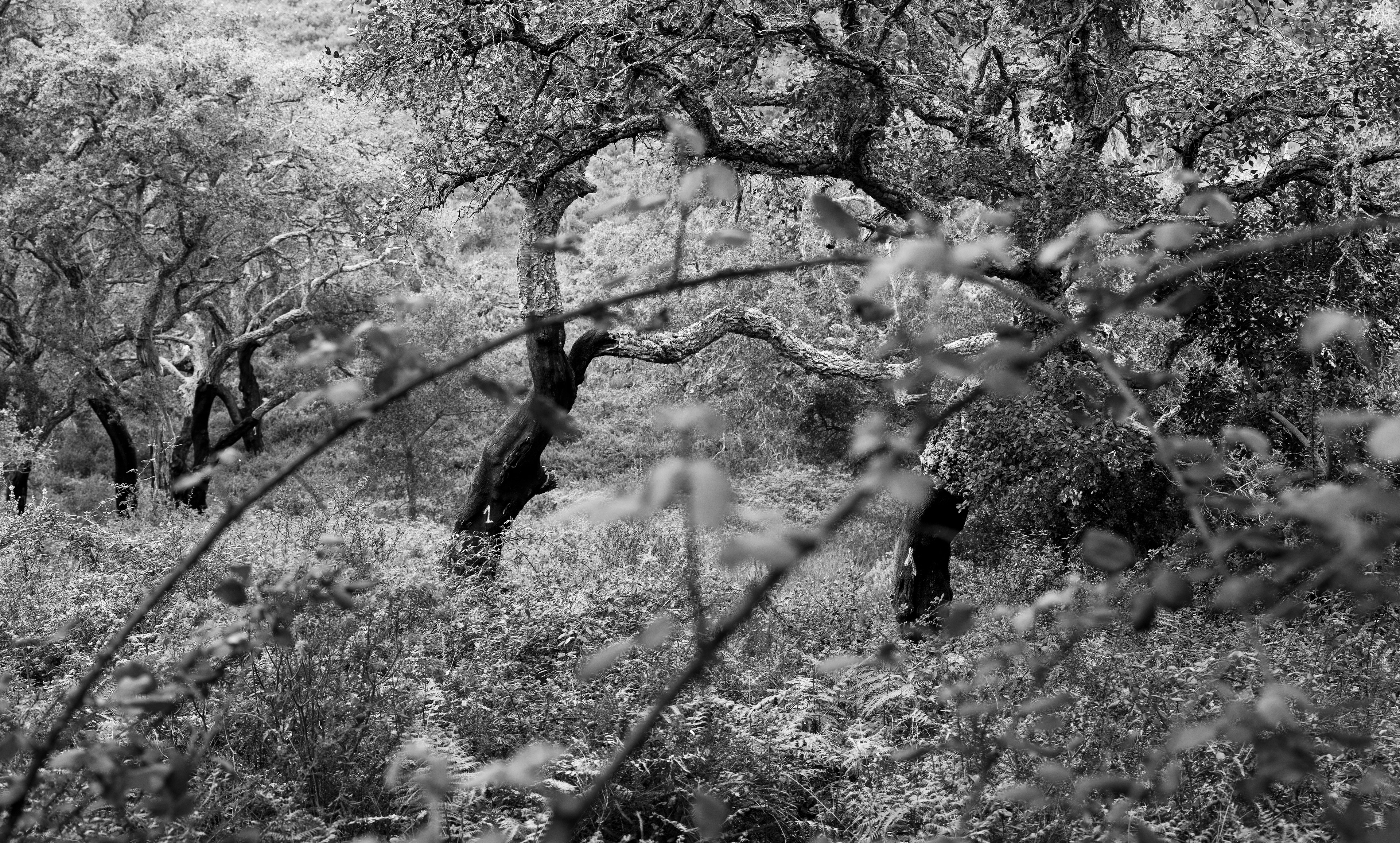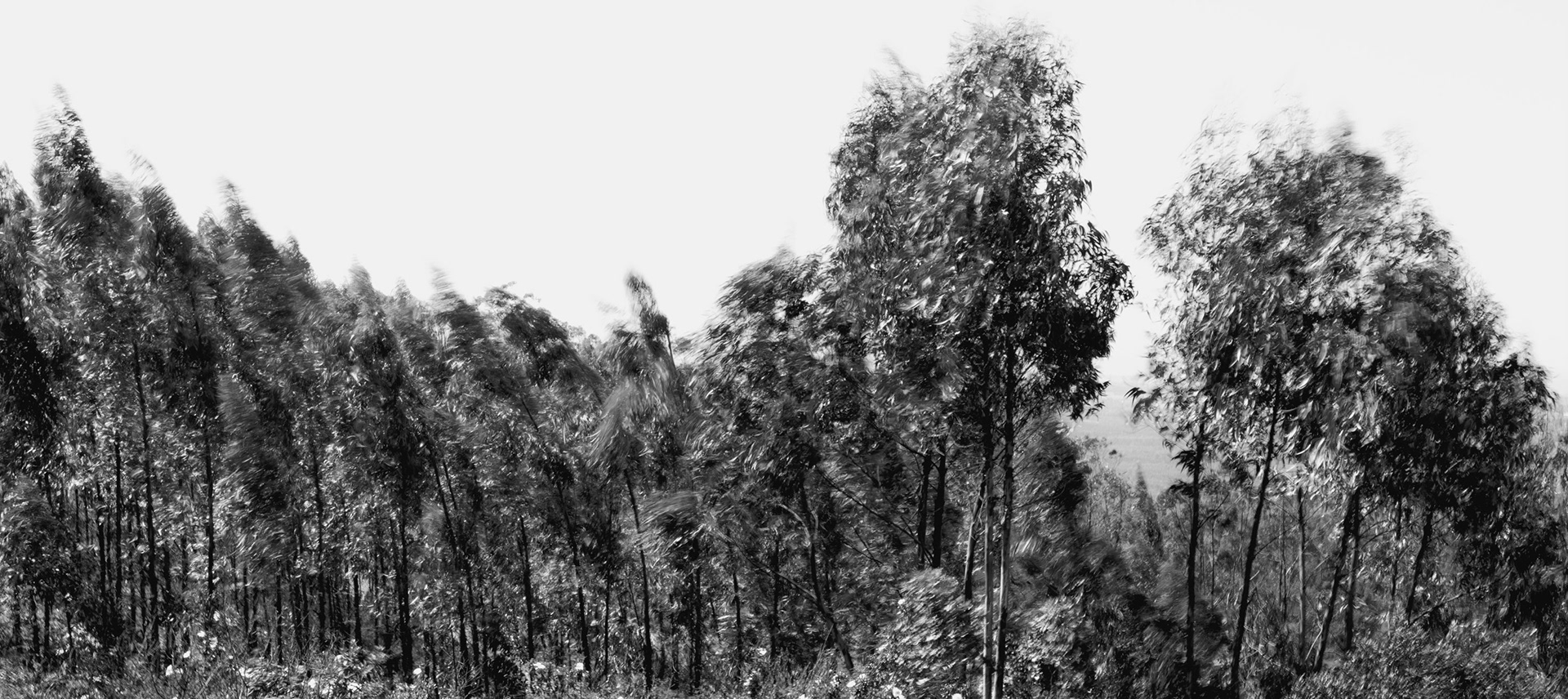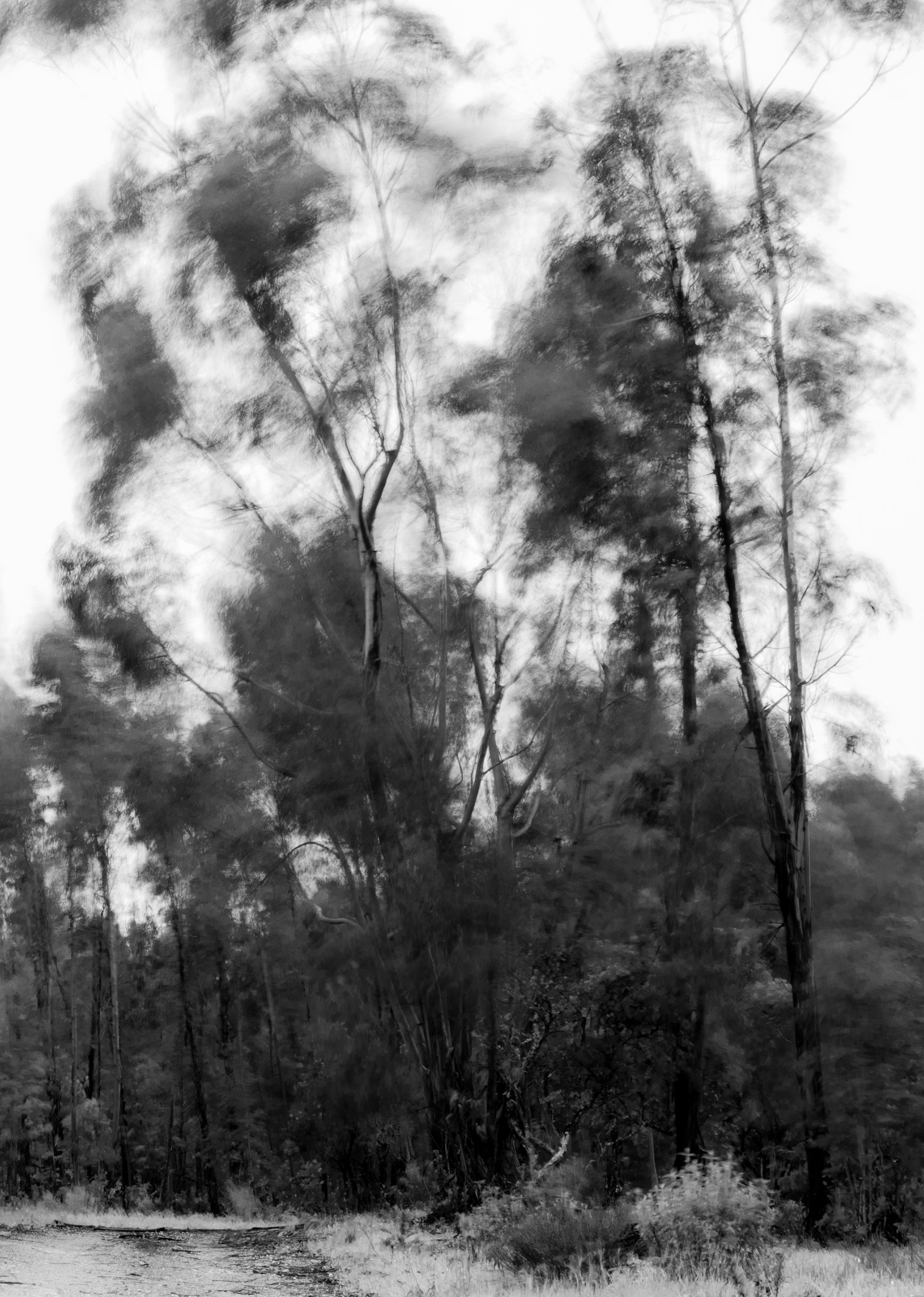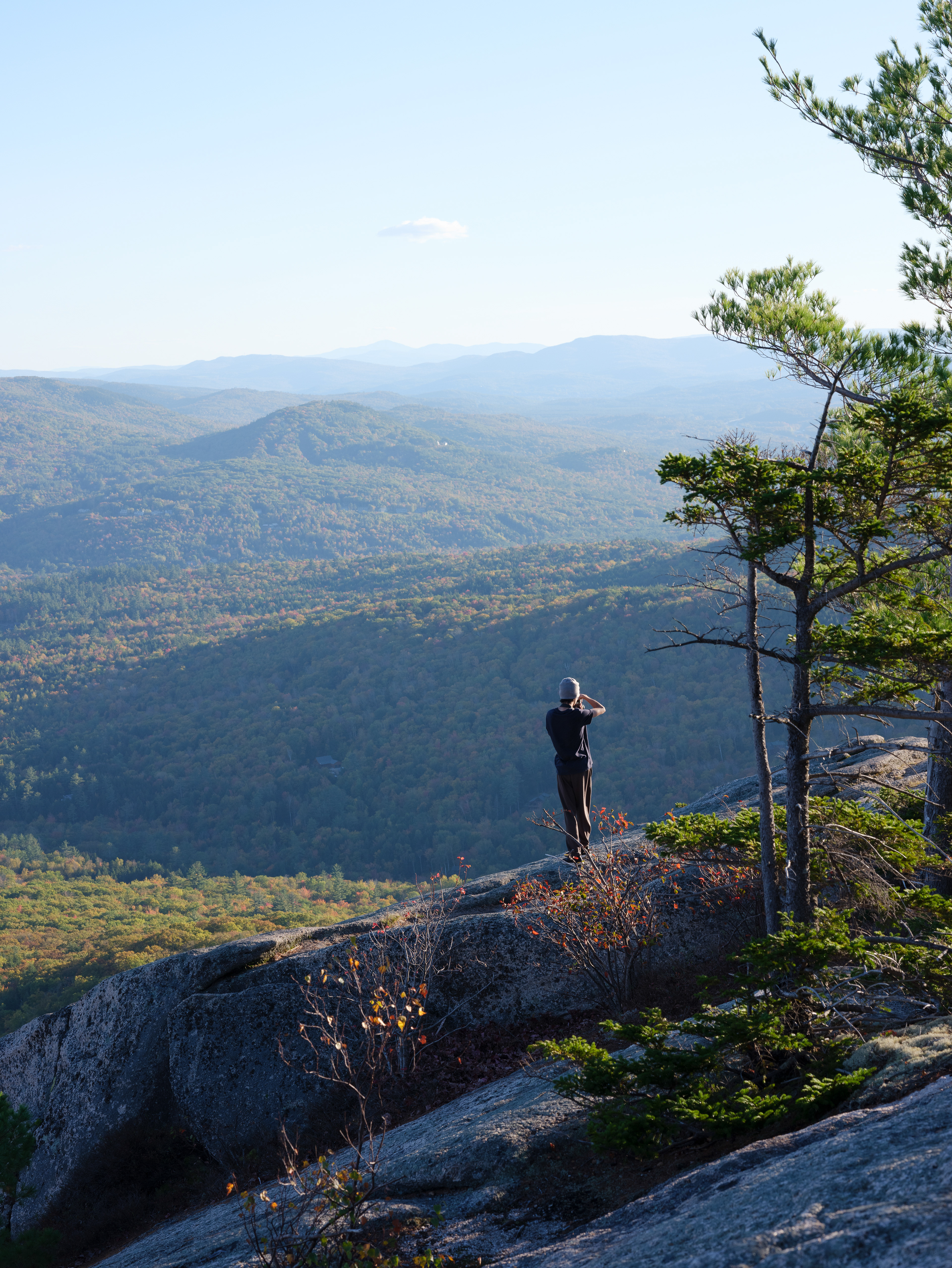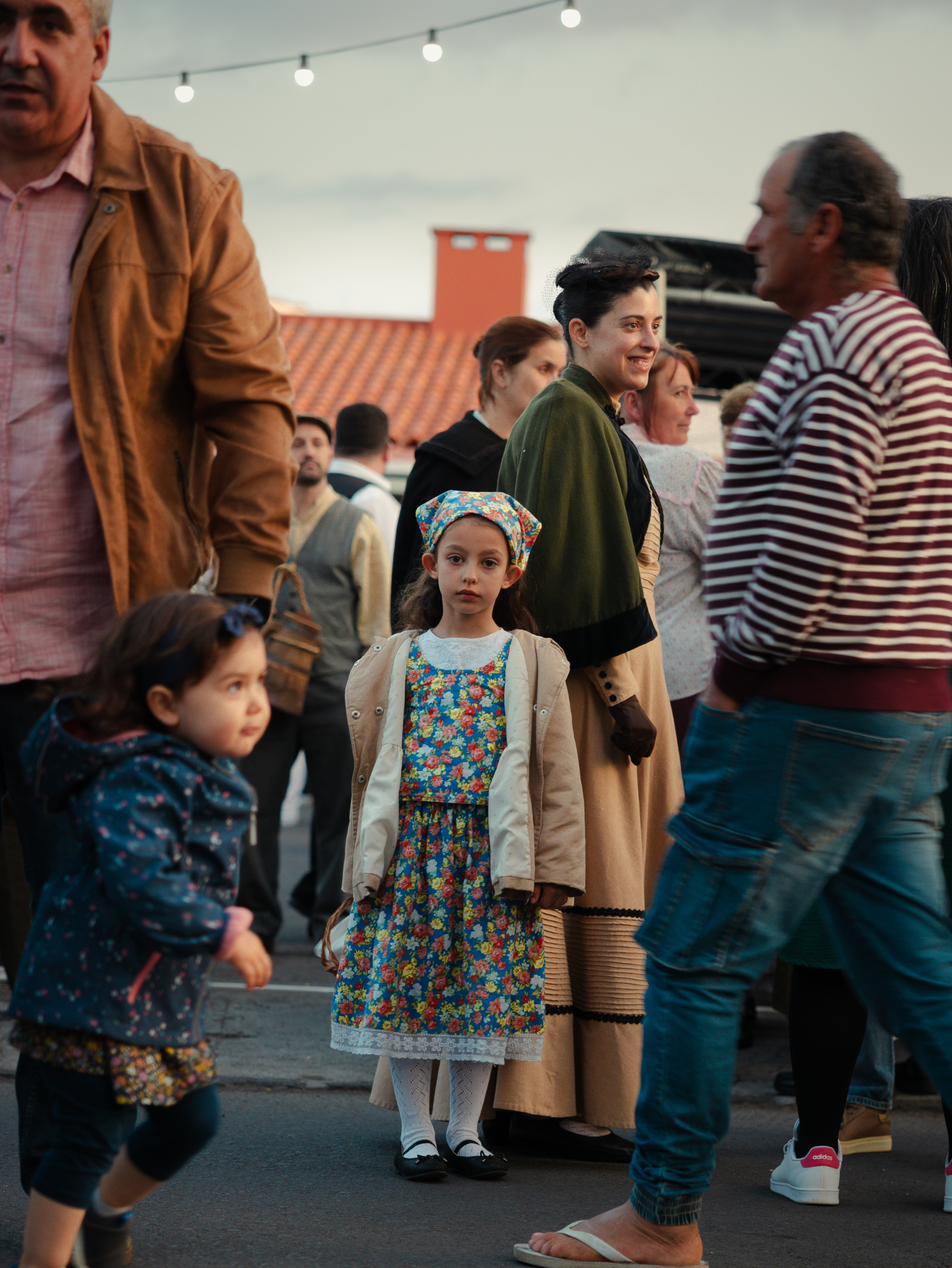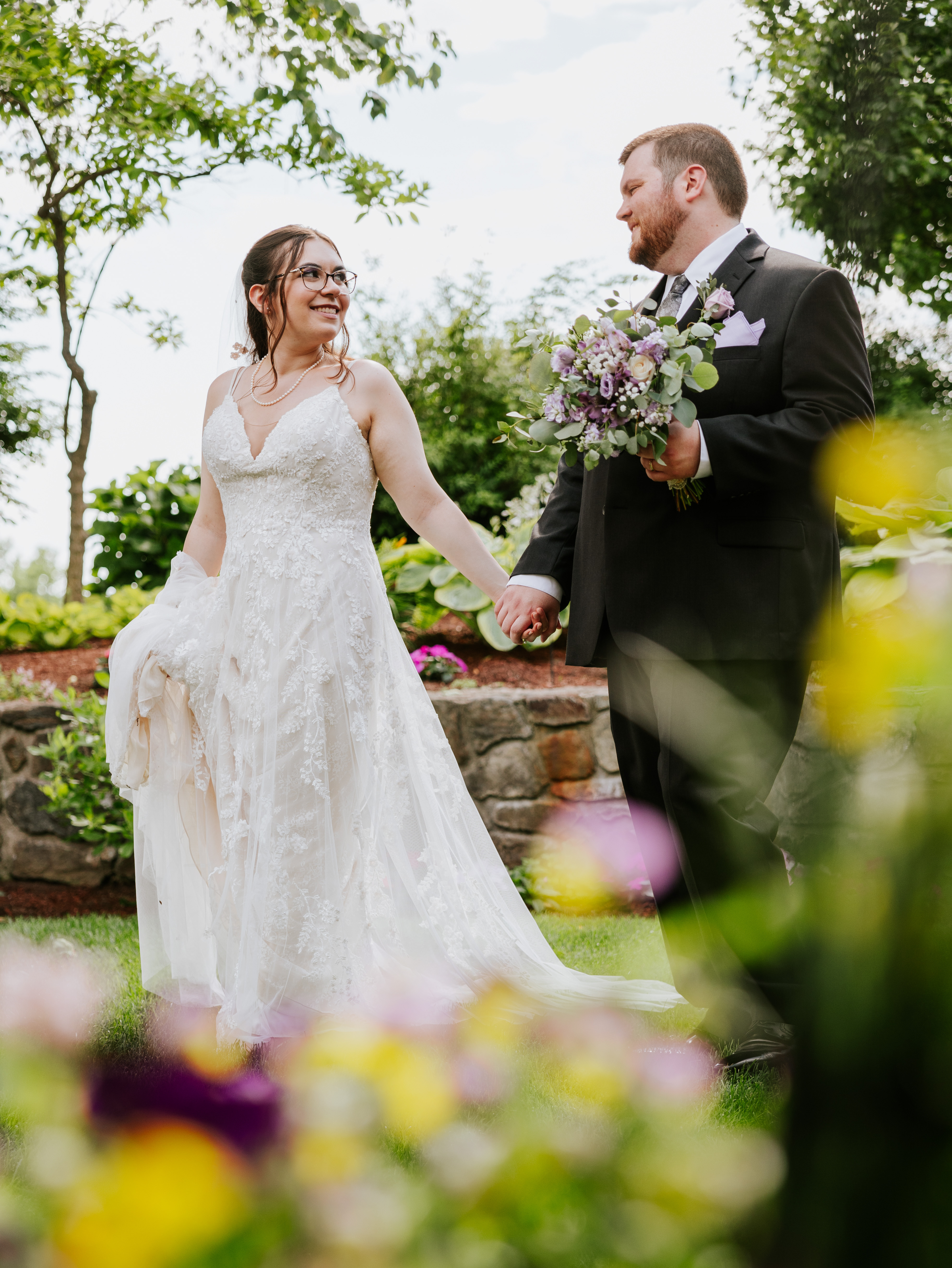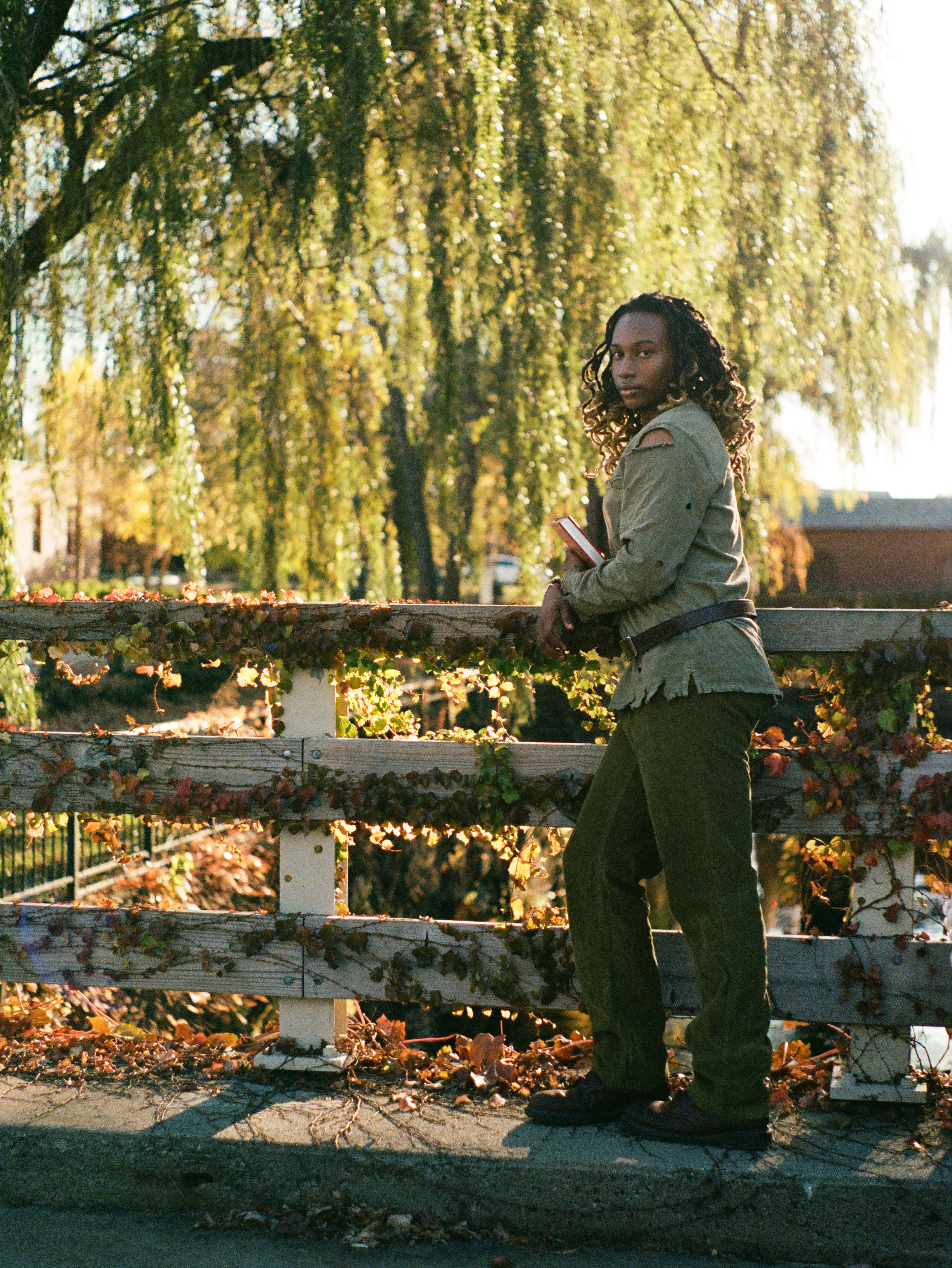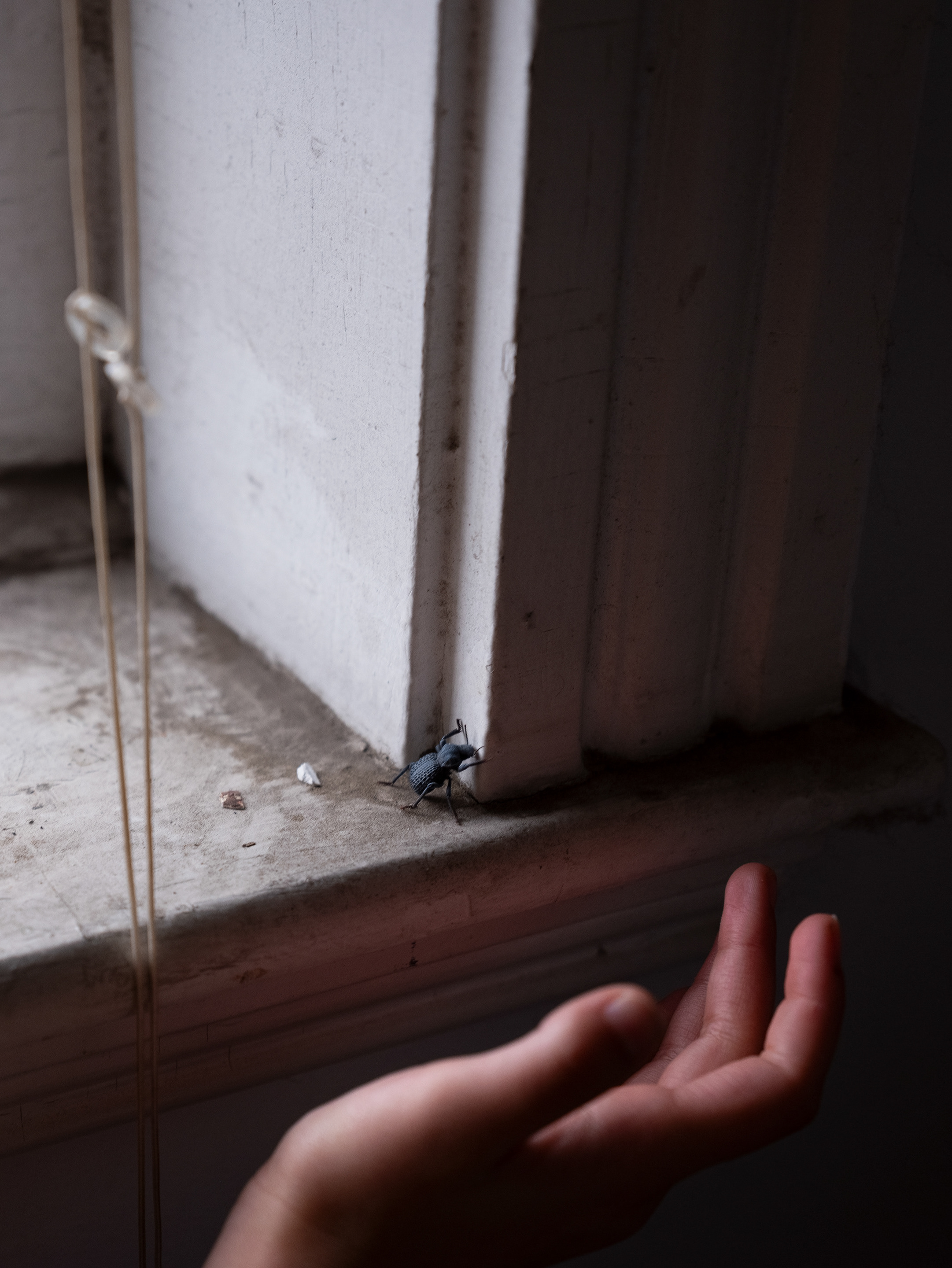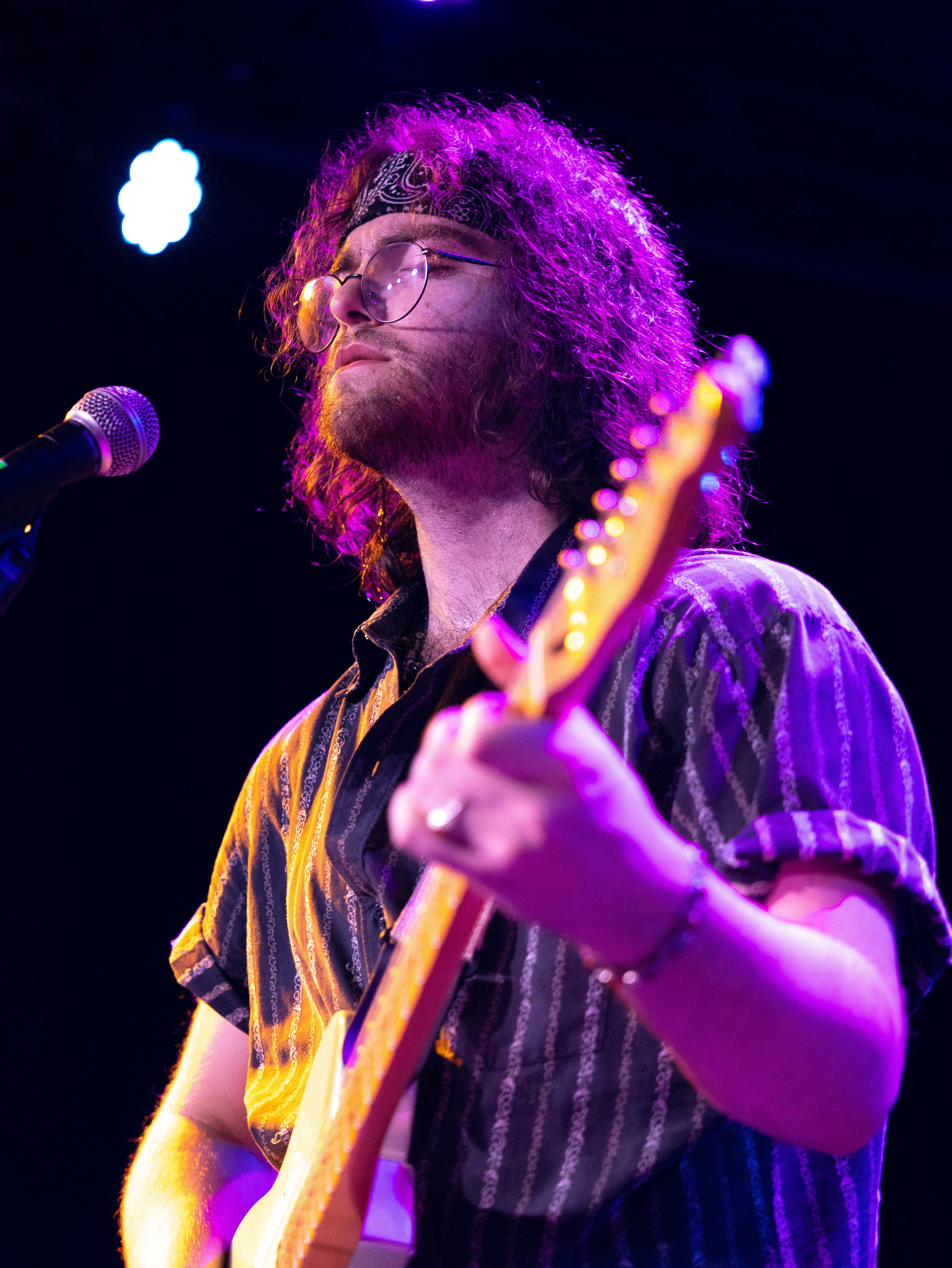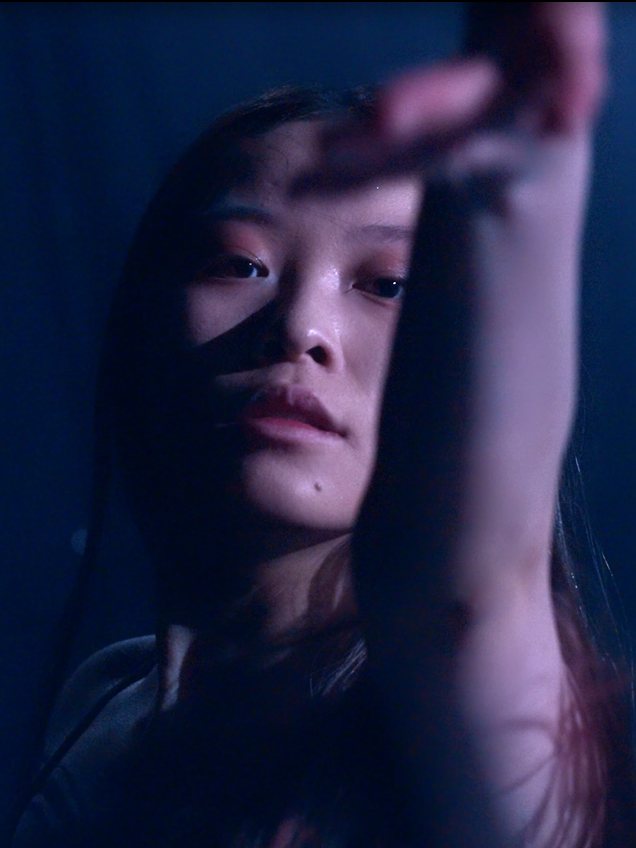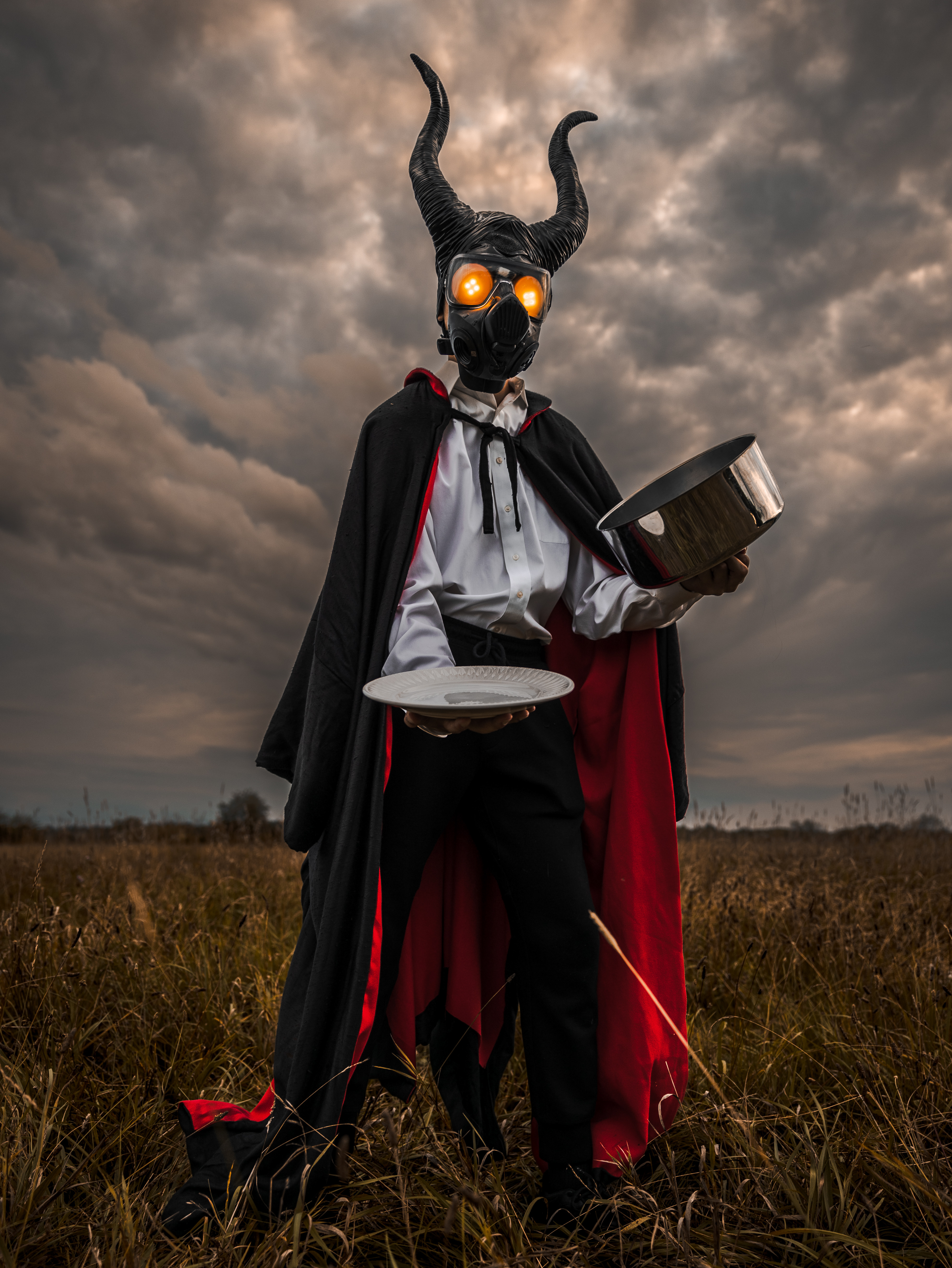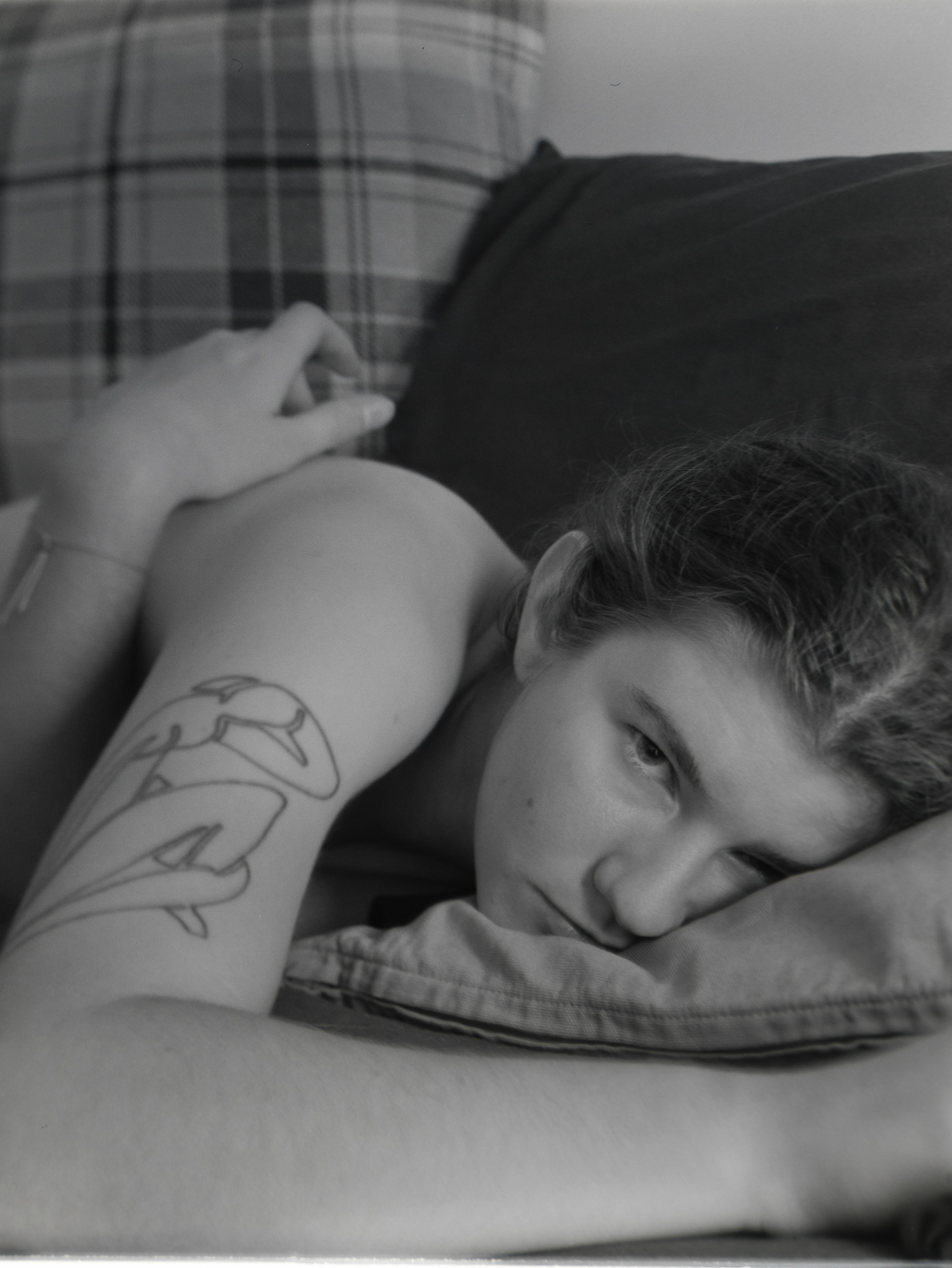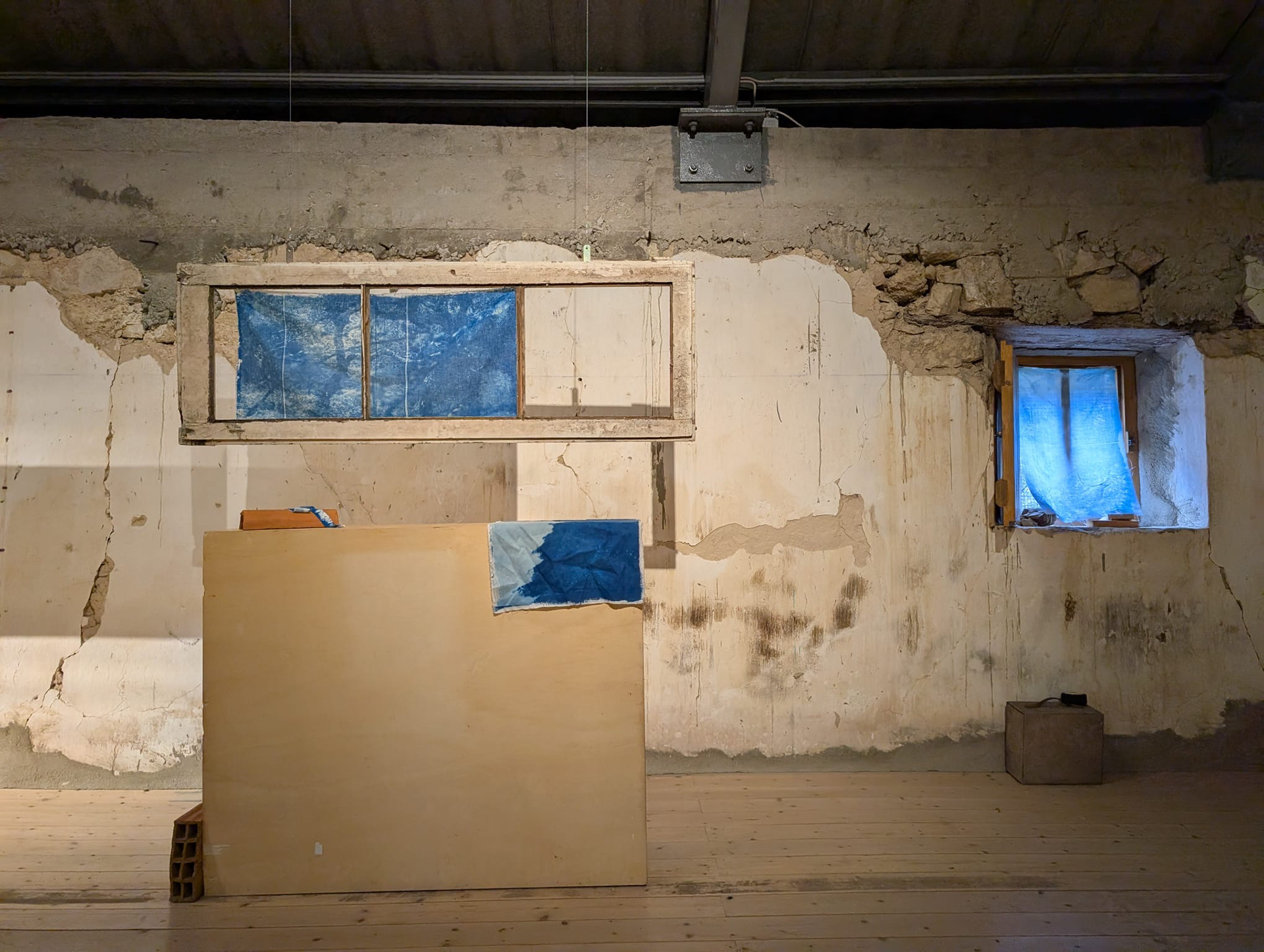
In March, 2025, I stayed in São Luís, Odemira, Portugal at Cultivamos Cultura for a week long residency. There, I created a body of work, Wash, and participated in a gallery installation.
Wash is a series of photographs which explore the fluidity of time, lineage, and memory in relation to the natural world of São Luís. The movement of waterways, cork and eucalyptus trees in the wind are depicted with soft, unclear boundaries through long exposure photographs, which are then printed as cyanotypes on sheets of fabric and hung in both windows and installed reclaimed windows in a gallery space.
Wash began as a reflection on how I perceive and experience time. Being from the United States, time often feels linear, fast-paced, and rigid, but working on this project in São Luís, I encountered a slower, more cyclical rhythm, life intertwined with seasons, harvest, and community. I photographed the cork trees as a symbol of this, their bark harvested only once a decade, in cycles that require long-term care, intergenerational knowledge, and collaboration with nature, as the trees only give bark when they’re ready to. The trees reflect the sustainability of the land, as well as the community which rests on it, creating a reciprocal relationship between people and place.
I am also exploring my own relationship to place through this project. Though I am of Portuguese decent, my ancestors immigrated to the United States many generations ago, and as a person with ancestry from multiple countries living on land that is not ancestrally mine, the distant cultural ties I maintain to my mixed lineage feel watered down and abstract – an Irish surname, Sicilian cooking, a handful of spoken Portuguese words in my home from a language none of us know anymore. In addition to the intergenerational knowledge needed to sustain the landscape, I consider intergenerational memory, the shards of culture which get passed down, mirrored by the soft, ambiguous movement over time captured in my long exposures. Their ambiguous nature also reflects this sense of being close to, yet apart from, a place I come from but do not know.
Additionally, the cyanotype process functions metaphorically and allows nature and time to play an integral role in my project, as it is contingent on the sun and weather. Hanging the printed fabric in windows upon installation allows for the elements to interact with the pieces over time, as well as allowing for the subtle movement of viewers in the space to send ripples through the fabric, a continuation of the cyclical and interconnected nature of land, memory, and culture the project reflects on.
Installation Views
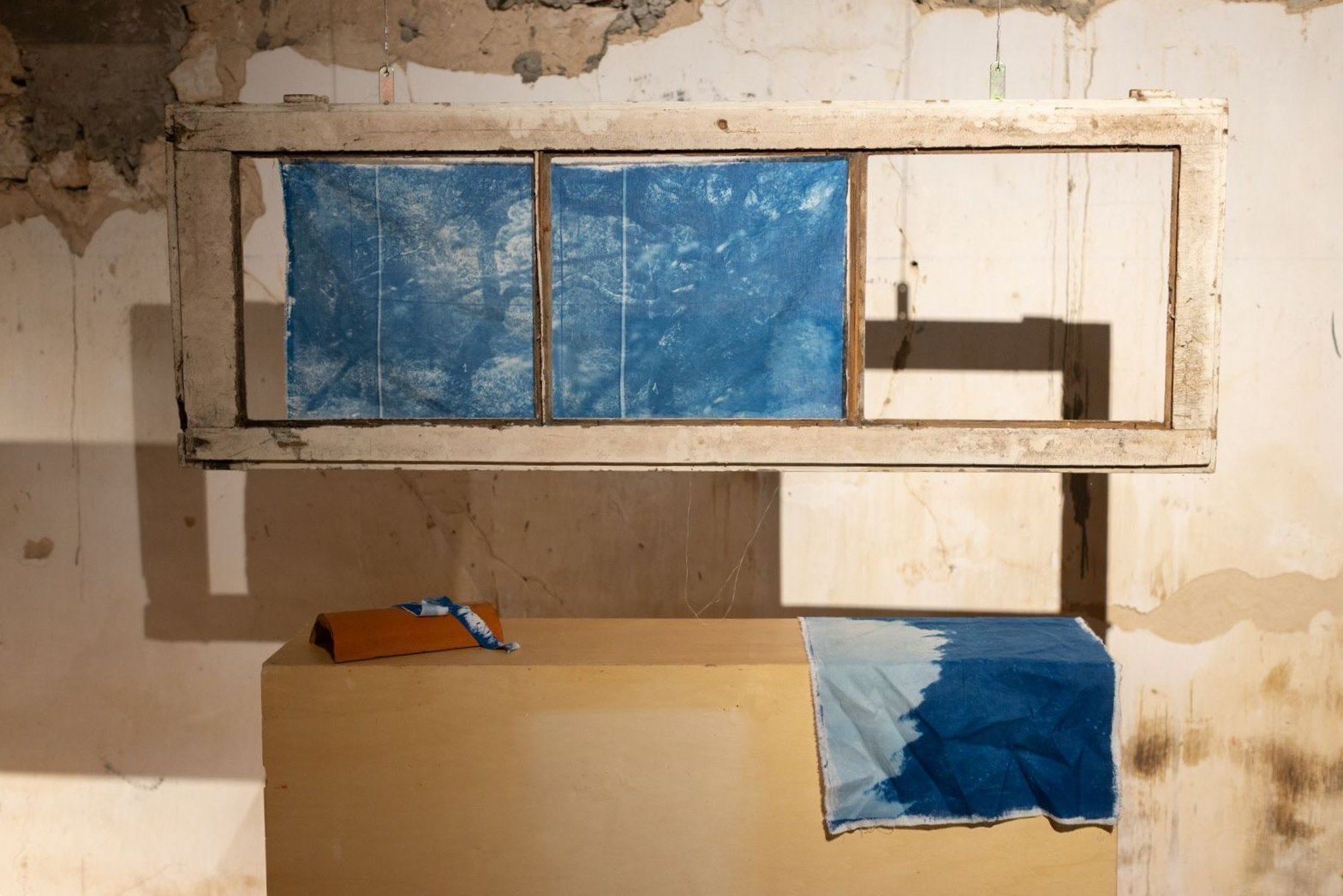
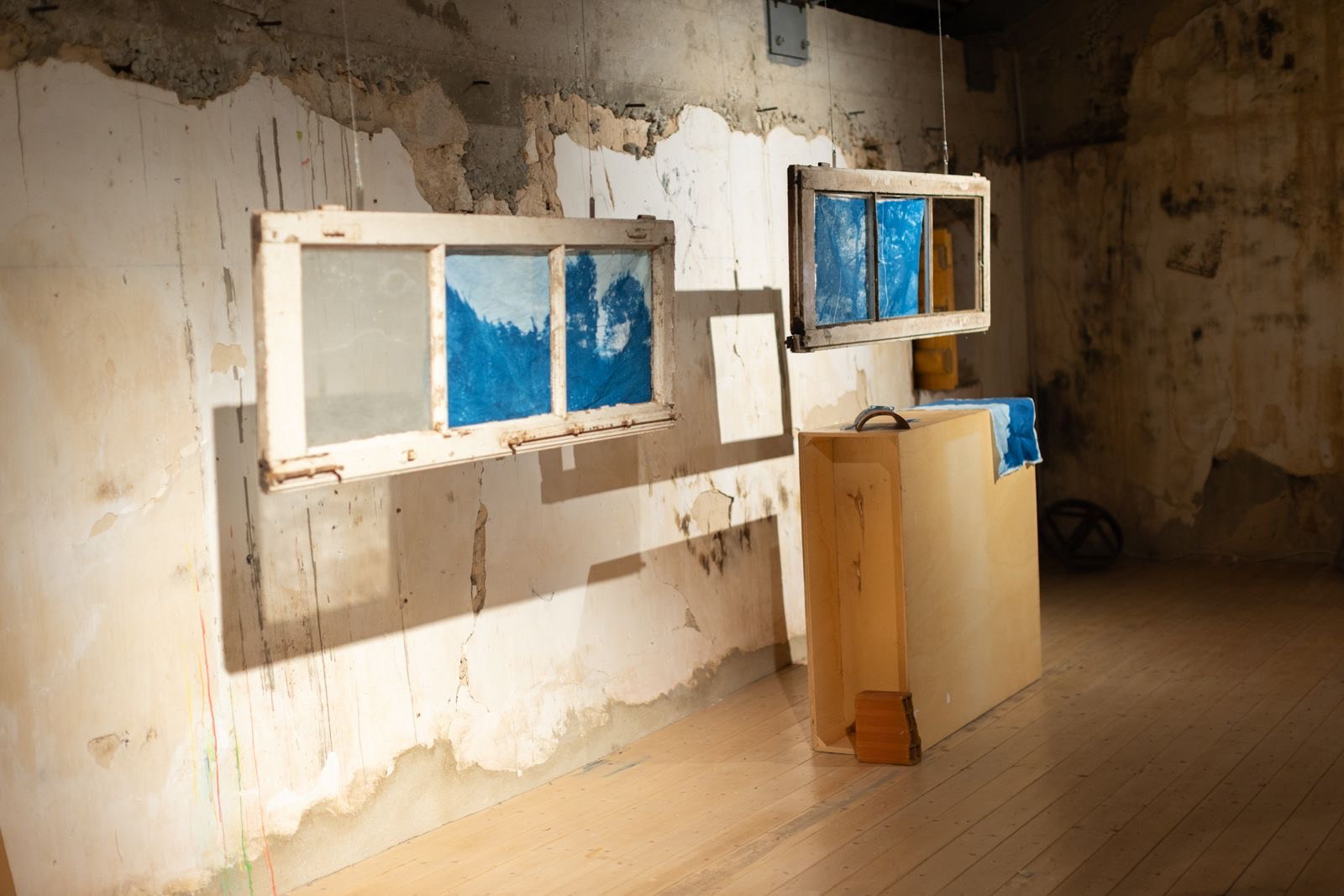
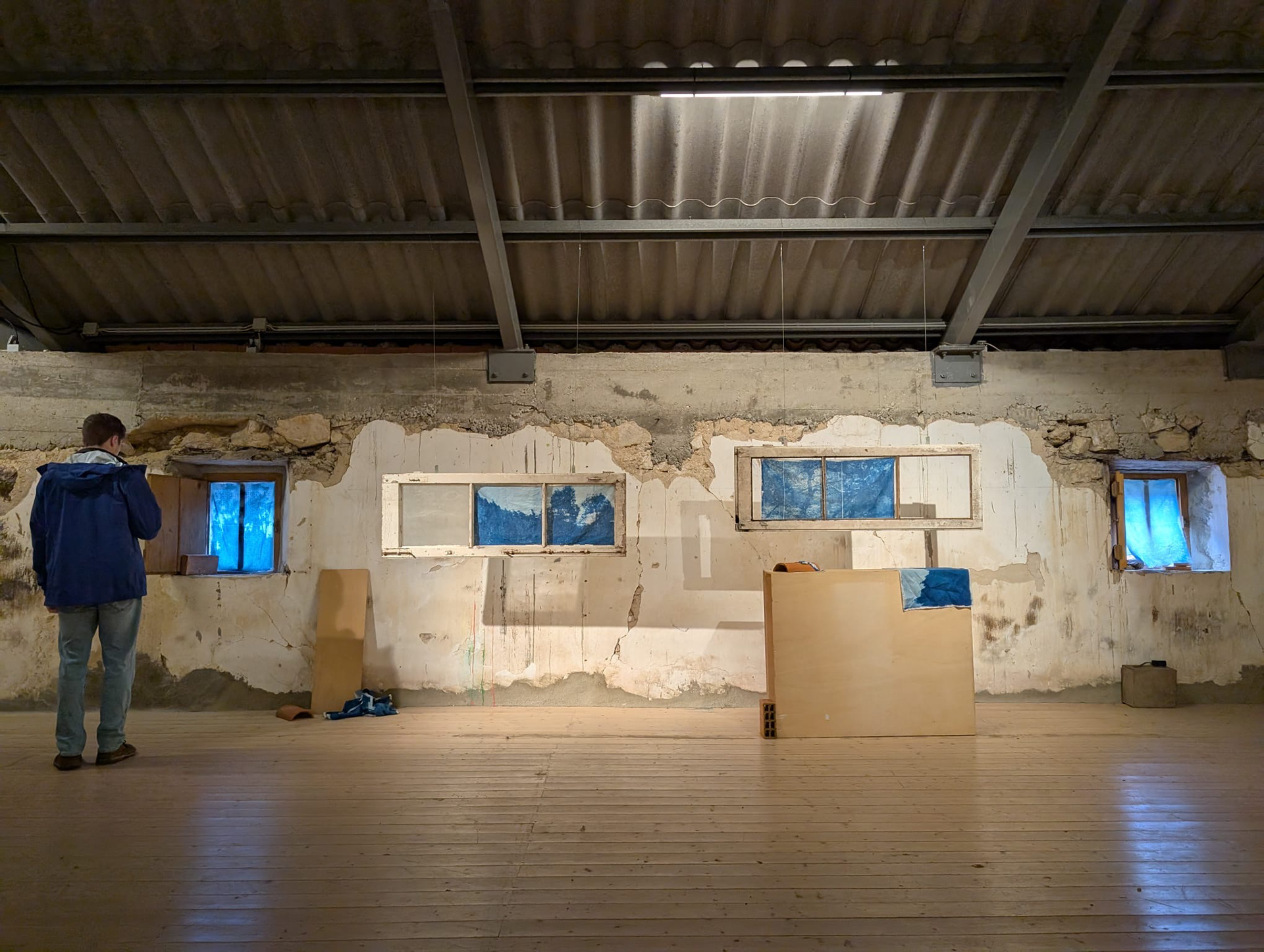
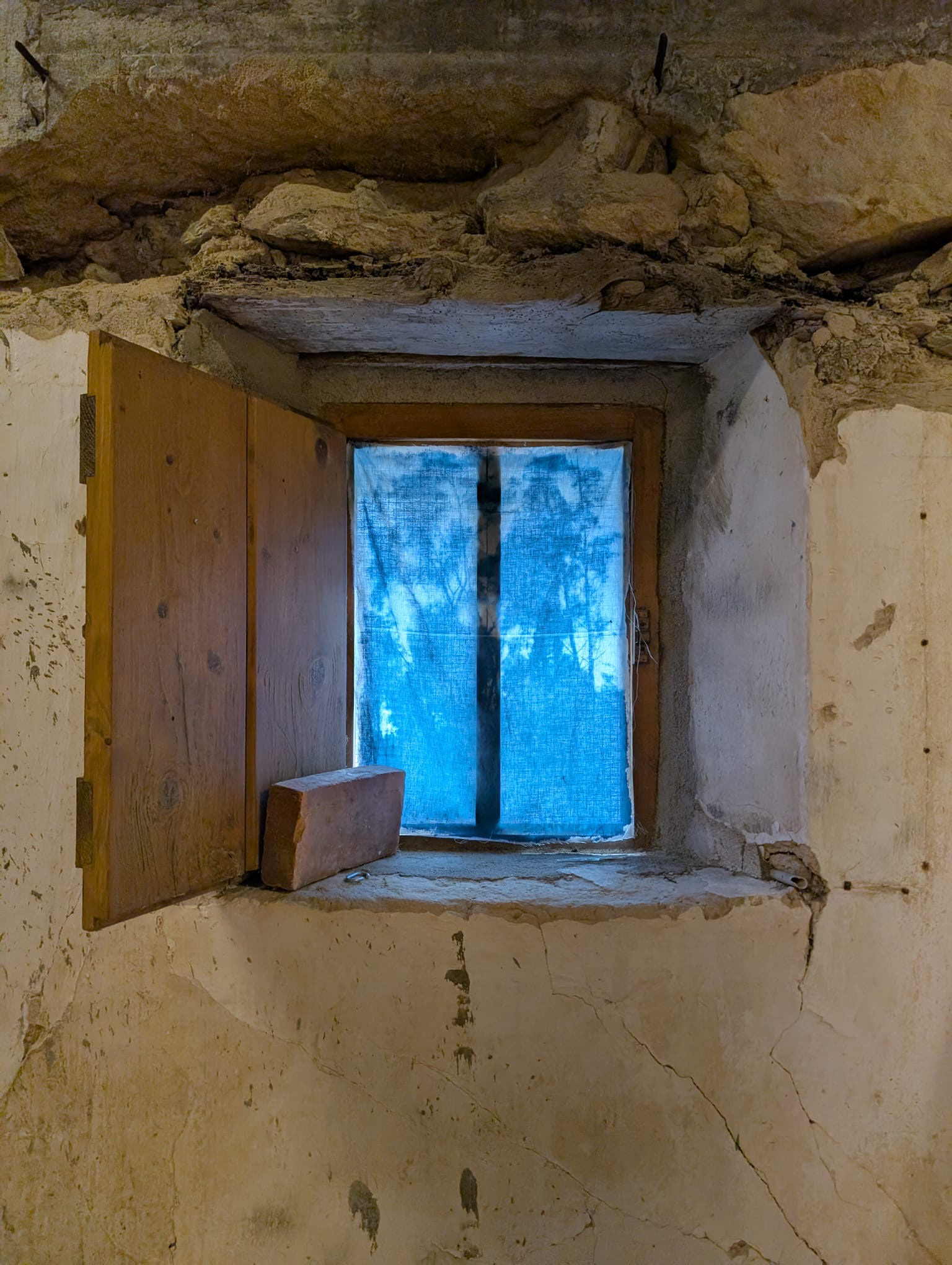
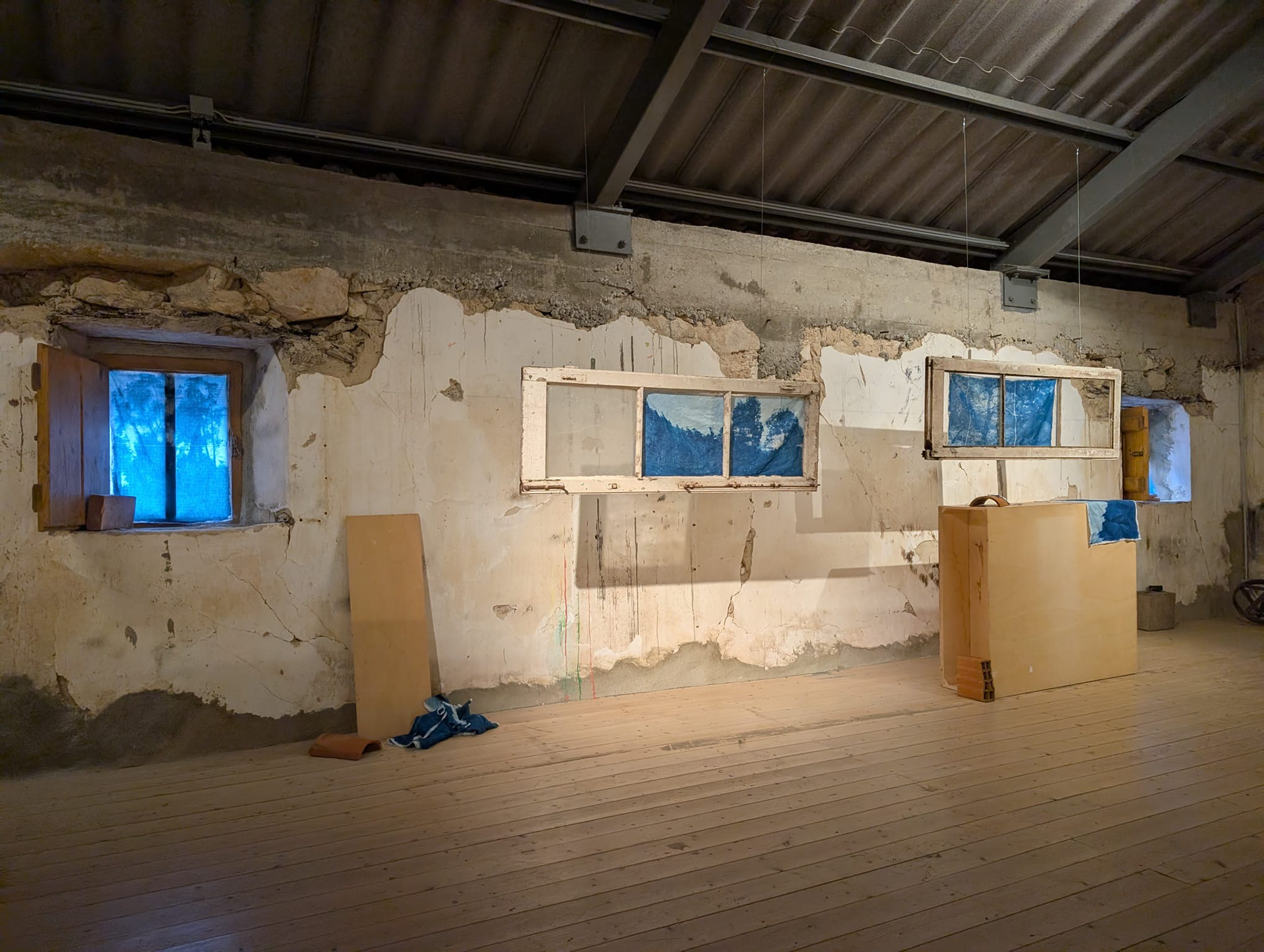
Image Samples
The images below are used to create cyanotypes. The high contrast contributes to the clarity of the print, as cyanotypes produce a narrow tonal range. These images are inverted and printed as digital negatives, which are then layered on top of the coated fabric and exposed in the sun, resulting in the blue fabric prints seen in the installation.
